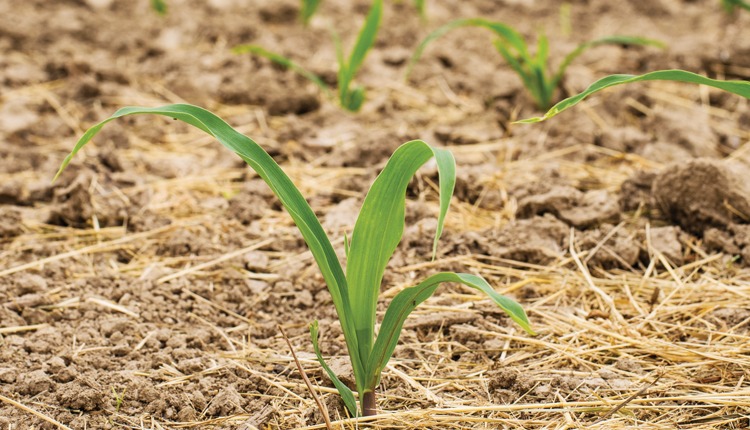Thomas is retired from the William H. Miner Agricultural Research Institute and president of Oak Point Agronomics Ltd.

The past couple of years have been rough ones for farmers buying fertilizers for their crops. All three major nutrients — nitrogen, phosphorus, and potassium — have been expensive, with secondary and minor nutrients also being costly. The good news is that the prices of virtually all fertilizers have declined in 2023, providing a buying opportunity for farmers, especially those who might have skimped on fertilizer applications due to the high price.
It’s too late in the growing season to discuss nitrogen prices since most nitrogen is applied in the spring and early summer, and dairy manure is usually available at this time of year to supply nitrogen to grass fields. Phosphorus is also primarily a spring-applied nutrient, though maintenance amounts are often applied to perennial forages as a summer topdress.
The overlooked nutrient
That leaves potassium. Over the past couple years, it has quite possibly been the most neglected nutrient.
At the end of 2022, the farm price for muriate of potash (0-0-60, the most common source of potassium fertilizer), was over $800 per ton. Prices have come down considerably since then. It was $200 lower now than at the beginning of 2023, and by the time you read this, the price might even be lower.
Will potash prices be even lower in spring 2024? I don’t know, but if your soil test potassium levels are low or medium, you can’t afford to wait!
The fertilizer form of potassium is called potash. Soil test and tissue analysis values are reported as elemental potassium (K), but the term used for fertilizer potassium is K2O. (To convert from K to K2O, multiply K by 1.2.)
Regular manure applications usually result in slowly rising soil test phosphorus levels because crops don’t need a lot of this nutrient. Most crops only take up as much phosphorus as they need, explaining the buildup of soil levels.
A high yield of alfalfa removes a lot of potassium, often more than moderate rates of dairy manure supply. And some crops — including both alfalfa and grasses — will take up more potassium than they need, called “lush consumption.” Therefore, soil test potassium levels can quickly decline after a year or two of high forage yields unless this nutrient is supplied by manure or fertilizer. That’s one reason why I recommend high-yielding fields be soil tested more frequently than once every three years as required by many nutrient management plans.
Comments on soil analysis
A trial at the Miner Institute in Chazy, N.Y., involved soil samples from over 30 crop fields that were submitted to a number of soil test labs. The results confirmed that all the labs had the ability to accurately determine soil fertility status. (The fertilizer recommendations the various labs made based on these analyses is a story for another time!)
Regardless of the lab used, if the analysis indicates a low soil test potassium for a particular field, you can rely on this being accurate. As was discussed in a previous “From Field to Feedbunk” column (in the January 10, 2023, issue of Hoard’s Dairyman), using the same soil test lab each year can help determine if the level of a particular nutrient in a field is rising, falling, or remaining relatively constant. That’s useful information since it’s a “report card” on the results of past nutrient applications.
We’ve also discussed tissue analysis in previous columns, but it’s worth repeating that a properly taken tissue sample — a specific part of the plant at a specified stage of growth — can also be useful in evaluating nutrient status. For instance, an alfalfa tissue analysis of less than 2% potassium should send up warning flags since average tissue potassium is just over 2.5%. Low alfalfa tissue potassium can result in reduced yields and perhaps lower crude protein content.
An ideal time to topdress potash on alfalfa is late summer or early fall — in August or after third or fourth cut. Apply the fertilizer early enough to allow plenty of time for the crop’s root system to take up nutrients. Potassium is antifreeze for alfalfa and other perennial legumes.
Even if you have some “catching up” to do, don’t apply more than 200 pounds of potash per acre per application to avoid lush consumption and potential leaching losses. And don’t hesitate to get help on fertilizer rates from your extension educator or crops consultant.
One ton of corn silage will remove about 8 pounds of potash, and maybe a bit more. We don’t see potassium deficiencies in corn nearly as often as we do in alfalfa, perhaps because dairy farmers typically apply much of their dairy manure on fields that will be planted to corn. However, on fields that don’t get regular manure applications (or adequate fertilizer), plant-available potassium can quickly drop low enough to affect yield.





